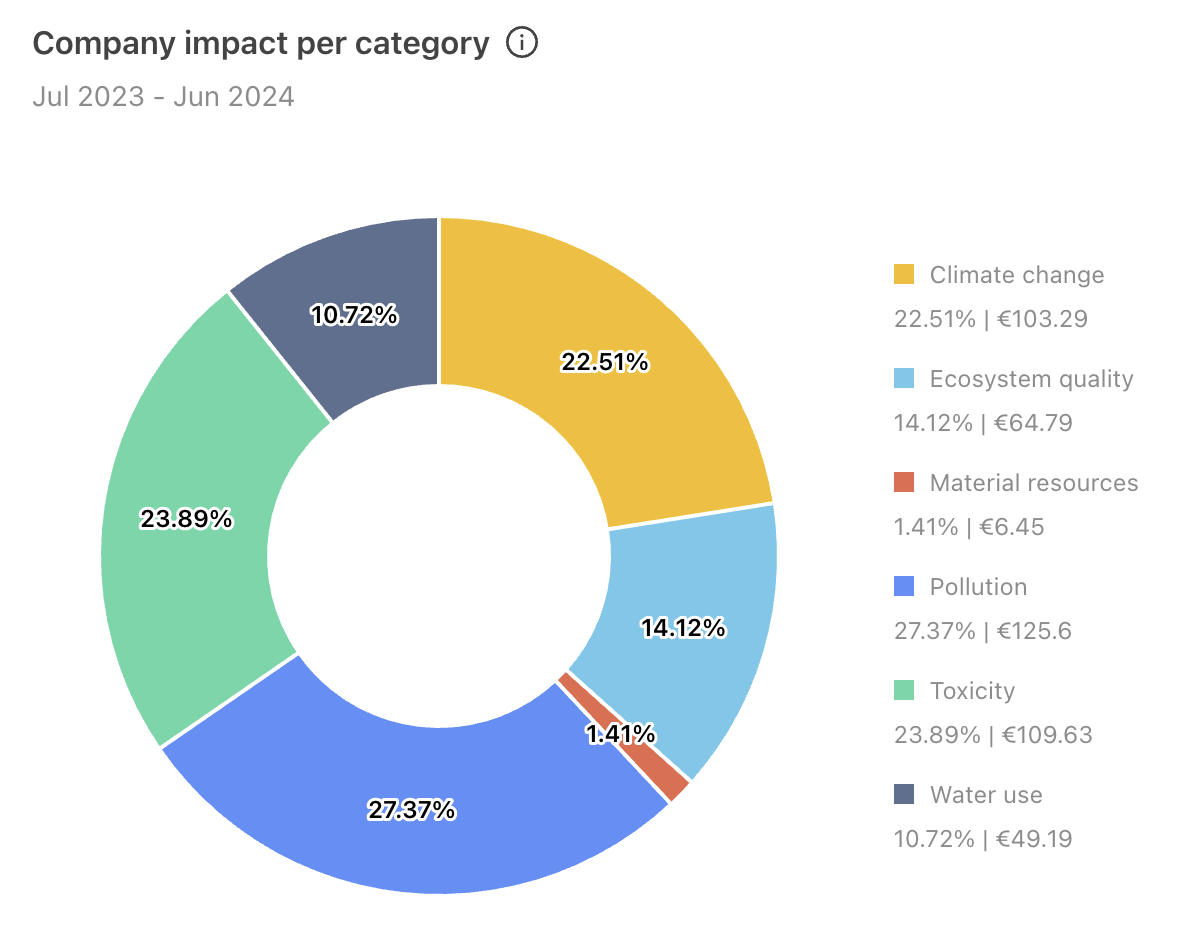Root’s environmental footprint metric: converting complex LCA data into action
Imagine Planet Earth as a bank, where environmental impacts like resource extraction and pollution act like cash withdrawals. Root’s environmental footprint metric calculates how much a company would owe if Earth sent an invoice for its environmental impacts. Root’s customers find this metric crucial in their sustainability journeys.
In this blog, discover what Root’s environmental footprint metric is, why it’s important and how companies like Philips use it to accelerate their sustainability initiatives.
PUBLISHED: 10 July 2024
WRITTEN BY: Charlie Walter
What is the environmental footprint metric and why is it important?
Root’s environmental footprint metric measures and assigns a monetary value to a company’s environmental impacts, such as carbon emissions and water usage. Using the Environmental Profit and Loss (EP&L) method, this metric simplifies complex environmental data by converting various impacts into a single monetary unit like euros.
Life Cycle Assessment (LCA) is essential for calculating this metric. LCA quantifies impacts like climate change, water use and toxicity, converting these impacts into a monetary unit for easy comparison. Companies like Philips, Gucci and Vodafone use this metric to drive their sustainability efforts by translating environmental impacts into financial terms. This simplifies communication and helps accelerate effective sustainability strategies.

How do companies use the environmental footprint metric?
The environmental footprint metric helps Root’s customers in several ways:
- Accessible Data: Converts complex LCA information into a relatable KPI – money. This makes it easier for businesses to understand and communicate environmental costs.
- Spotlight Hotspots: Identifies key areas to reduce environmental impact by highlighting environmental hotspots. This focused approach allows companies to prioritise efforts where they are most effective and make informed decisions.
- Clear Communication: Providing monetary values for environmental impacts improves transparency with stakeholders like investors. This clarity helps build stakeholder trust and demonstrates a company’s commitment to sustainability.
Case Study: Philips
Philips has used the environmental footprint metric since 2017 to accelerate its sustainability strategy. Their 2023 EP&L report, following a similar methodology to Root’s environmental impact metric, converted LCA impact data into monetary terms. This metric showcased Philips’ total environmental impact and revealed that customer energy consumption dominated its overall environmental footprint. Using this metric allowed Philips to reduce their environmental impact and communicate their sustainability efforts.
“Using the EP&L method to calculate Philips’s environmental footprint simplified reporting by consolidating their total environmental impact into a single KPI. This streamlined the reporting process and allowed Philips to consider factors like ecosystem quality and circular economy in their reduction strategies.”
– Gijs de Mol | CEO & LCA Lead at Root (former LCA consultant at Philips).
We can help
Root’s vision is to redefine the norm by making product footprints universal. Our platform conducts LCA for all products, helping businesses report effectively on regulations, avoid greenwashing, become industry leaders and grow.
Root collaborates with companies to develop LCAs and calculate the environmental footprint metric as part of our comprehensive service. Our automated platform makes this process accessible and efficient. We avoid LCA jargon by grouping all environmental impact data into six relatable categories, making the data easier to understand and be used to create impact. These six categories collectively form the overall environmental footprint metric.
Interested in learning more? Get in touch with our team to discover how Root can help you calculate this metric, incorporate it into your company and drive sustainable growth.
